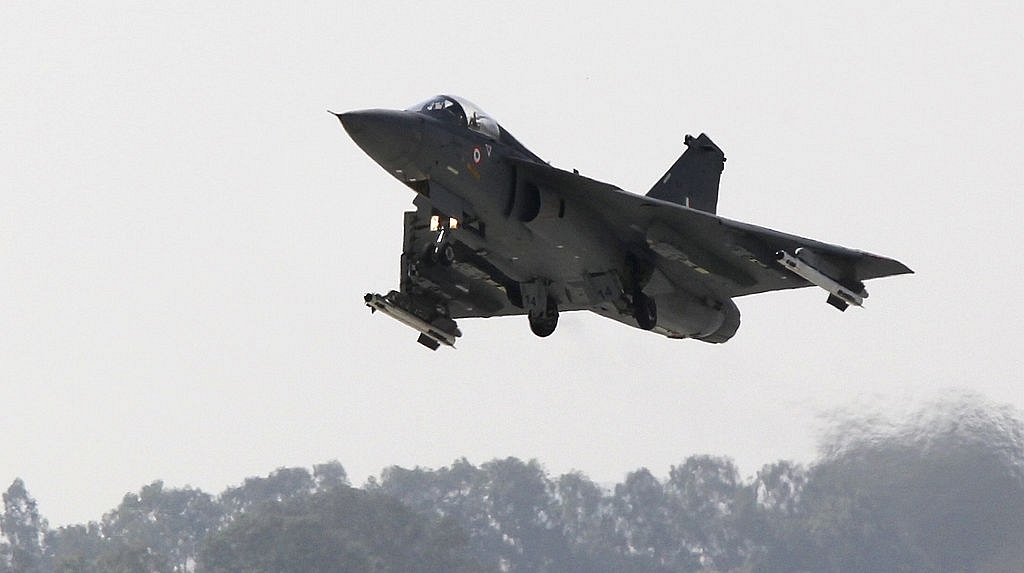Insta
HAL Gives On Time Performance For Indian Air Force; Rolls Out 16th LCA Tejas As Per Target

An Indian Light Combat Aircraft Tejas flies during an ‘Initial Operational Clearance’ procedure. Photo credit: STRDEL/AFP/GettyImages
The State-run Hindustan Aeronautics Limited (HAL) on Monday (25 March) rolled out 16th Light Combat Aircraft (LCA) Tejas in Initial operational clearance (IOC) which will be inducted into 'Flying Daggers' squadron of the Indian Air Force (IAF), reports Daily Pioneer.
"We have produced 16th LCA as per the target till 31 March. The customer flights are expected to be completed by the end of March," HAL said in a statement.
The defence major has an order from IAF for 40 LCAs (16 each in IOC and final operational clearance (FOC) and 8 additional for training purposes). Recently HAL had received drawings and documents related to FOC configuration with limited clearance for LCA (Tejas) from Centre for Military Airworthiness and Certification (CEMILAC) and Aeronautical Development Agency (ADA).
Now HAL can tread towards planning, procuring parts and finally producing FOC standard LCA Tejas aircrafts, the first of which is expected to be rolled-out by the end of this calendar year.
Initial production capacity when production began was eight aircrafts per annum. A second production line has since been set up at Aircraft Division in Bengaluru's aerospace hub, which carries out structural assembly, final assembly and equipping of the aircraft.
Last month (February 2019), Tejas demonstrated its combat capability in the IAF’s ‘Gagan Shakti’ exercise by firing the Air-to-Air BVR Derby missile.
Two Tejas aircrafts will be flying at the Langkawi International Maritime Aerospace Expo (LIMA- 2019) in Malaysia beginning today (26 March 2019).
Introducing ElectionsHQ + 50 Ground Reports Project
The 2024 elections might seem easy to guess, but there are some important questions that shouldn't be missed.
Do freebies still sway voters? Do people prioritise infrastructure when voting? How will Punjab vote?
The answers to these questions provide great insights into where we, as a country, are headed in the years to come.
Swarajya is starting a project with an aim to do 50 solid ground stories and a smart commentary service on WhatsApp, a one-of-a-kind. We'd love your support during this election season.
Click below to contribute.
Latest